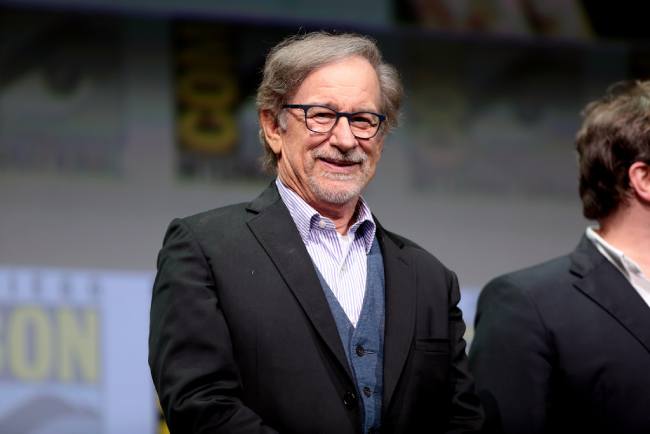
From Struggles to Stardom: How Steven Spielberg Defied the Odds to Become a Film Legend
When we think of Steven Spielberg, we think of ET, Saving Private Ryan, Schindler’s List
Table of Contents
ToggleHow did a kid who read two grade levels behind his classmates and still takes more than twice as long to read a document as the average reader become one of the most successful celebrities in film making?
Spielberg’s Early Signs of Dyslexia
Steven Spielberg’s journey with dyslexia began long before his official diagnosis at age 60. His childhood experiences reveal several early indicators of dyslexia that went unrecognized
Spielberg took more than two years to learn how to read, a significant delay compared to his peers. He consistently read two grade levels behind his classmates. Steven experienced many struggles in the classroom. The future filmmaker dreaded being called upon to read aloud in class, a common anxiety for children with undiagnosed dyslexia.
Because of this, school administrators mislabeled Spielberg as “lazy” due to his reading challenges, a frequent misunderstanding of dyslexia in the 1950s.
Spielberg recalls being bullied by classmates, likely due to his academic difficulties and perceived differences.
Young Spielberg found comfort in creative pursuits, beginning to make movies at age 12. This early interest in visual storytelling may have been a way to express himself without relying on traditional reading and writing.
Despite the lack of a formal diagnosis, Spielberg’s parents were caring and involved in his education. His mother focused on English, while his father helped with math and history.
Even as an adult, Spielberg takes significantly longer to read scripts and books, a persistent sign of dyslexia that continued into his professional life.
These early signs, while overlooked at the time, paint a picture of a child grappling with an undiagnosed learning disability. Spielberg’s experiences highlight the importance of early detection and the potential for individuals with dyslexia to channel their unique perspectives into creative success.
“You are not alone, and while you will have dyslexia for the rest of your life, you can dart between the raindrops to get where you want to go. It will not hold you back”
Steven Spielberg
Video: Steven Spielberg discusses his dyslexia
From school to film making and back to school
By age of 12, young Spielberg began making movies. In 1968, Universal Studios offered him an internship, so he dropped out of college to become a filmmaker. He returned to college when he was in his 50s because he wanted to set a good example for his children and felt strongly that “when you start something, you should finish it.”
Beyond the Classroom: Spielberg’s Parents and Their Impact on His Dyslexia Journey
Steven Spielberg’s journey with dyslexia was significantly influenced by the unwavering support of his parents. Despite the lack of a formal diagnosis during his childhood, Spielberg’s parents played a crucial role in his educational and personal development.
Spielberg’s mother, Leah Adler, focused on helping him with English, while his father, Arnold Spielberg, assisted with math and history. This division of subjects allowed for targeted support in areas where Spielberg struggled most. Their involvement demonstrates the importance of parental engagement in a child’s education, especially when facing learning challenges.
The support Spielberg received at home provided a stark contrast to his experiences at school, where he was often misunderstood and labeled as “lazy.” This highlights the critical role that parents can play in advocating for their children and providing emotional support when the education system falls short.
The impact of this parental support extends far beyond childhood. It likely contributed to Spielberg’s resilience and determination to succeed despite his reading difficulties. His parents’ acceptance and encouragement may have been instrumental in fostering the creativity that would later define his legendary career in filmmaking.
The importance of support from parents and educators cannot be overstated for individuals with dyslexia or other learning differences.
Such support can:
- Boost self-esteem and confidence
- Encourage the development of coping strategies
- Foster a love for learning despite challenges
- Provide a safe environment for academic and personal growth
- Help identify and nurture unique strengths and talents
Spielberg’s story serves as a powerful reminder of the transformative impact that supportive parents and educators can have on a child’s life. It underscores the need for increased awareness, understanding, and tailored support for individuals with dyslexia in both home and educational settings.
By creating an environment of acceptance, encouragement, and targeted assistance, parents and educators can help children with dyslexia not just overcome their challenges, but also discover and cultivate their unique gifts – just as Spielberg’s parents did for him.
Overcoming Dyslexia Challenges: Spielberg’s Reading Strategy
As recorded in an celebrity-with-dyslexia, Spielberg said: “I’m in
Though it takes him more than twice as long as others to read a document, Spielberg claims that this slower pace allows him to absorb the contents more thoroughly and retain almost everything he reads.
Spielberg’s Learning Strategies
Steven Spielberg has developed several effective strategies to manage his dyslexia, particularly when it comes to reading and comprehending scripts and other materials essential to his work as a filmmaker:
Extended Reading Time: Spielberg allocates significantly more time for reading than the average person. He typically spends 2 hours and 45 minutes to 3 hours reading what others might complete in just over an hour. This extended time allows him to process information thoroughly.
Slow and Deliberate Approach: Rather than rushing through text, Spielberg adopts a slow and methodical reading style. This approach enables him to absorb and understand the content more deeply.
Active Engagement: While reading, Spielberg actively engages with the material. He often reads aloud, which helps him process information through both visual and auditory channels, enhancing comprehension.
Visual Aids: As a visual thinker, Spielberg often translates written information into mental images or sketches. This technique helps him better understand and remember complex narratives or descriptions.
Collaborative Approach: Spielberg frequently works with trusted colleagues who can provide verbal summaries or discussions of written materials, allowing him to grasp key concepts more easily.
Technology Utilization: He embraces technological aids, such as text-to-speech software, which can read scripts aloud, allowing him to focus on visualizing the story rather than decoding text.
Repetition and Review: Spielberg often revisits material multiple times, reinforcing his understanding and retention of important details.
These strategies have enabled Spielberg to not only manage his dyslexia but to excel in a field that heavily relies on written communication and complex storytelling.
Dyslexia and Creativity: Spielberg as a Case Study
The potential link between dyslexia and enhanced creativity has been a subject of interest for researchers and educators alike. Steven Spielberg’s career serves as a compelling case study for this connection:
Visual Thinking: Dyslexia often correlates with strong visual-spatial skills. Spielberg’s exceptional ability to visualize stories and translate them to the screen may be partly attributed to this dyslexia-related strength.
Unique Perspective: The challenges of dyslexia often lead individuals to develop alternative problem-solving approaches. Spielberg’s innovative storytelling techniques and groundbreaking visual effects could be seen as a result of this different way of processing information.
Narrative Focus: People with dyslexia often excel at understanding and creating narratives. Spielberg’s mastery of storytelling across various genres demonstrates this strength.
Empathy and Emotional Intelligence: Many individuals with dyslexia develop strong empathetic skills. Spielberg’s ability to create emotionally resonant characters and stories that connect with audiences worldwide may be linked to this trait.
Adaptability and Resilience: Overcoming the challenges of dyslexia often fosters resilience and adaptability. Spielberg’s success in an ever-changing industry reflects these qualities.
Interdisciplinary Thinking: Dyslexia can promote connections between seemingly unrelated concepts. Spielberg’s ability to blend genres and create new cinematic experiences exemplifies this type of creative thinking.
Risk-Taking: The experience of navigating dyslexia can encourage a willingness to take risks. Spielberg’s pioneering work in special effects and his tackles of diverse, challenging subjects in his films showcase this attribute.
While it’s important to note that not all individuals with dyslexia will experience enhanced creativity, and not all creative individuals have dyslexia, Spielberg’s career provides a compelling example of how the unique cognitive processes associated with dyslexia can contribute to extraordinary creative achievements. His success underscores the importance of recognizing and nurturing the potential strengths that can accompany learning differences.
Spielberg’s Message of Hope: Navigating Life with Dyslexia
Steven Spielberg’s inspiring words to those with dyslexia resonate with hope and determination. His message, “You are not alone, and while you will have dyslexia for the rest of your life, you can dart between the raindrops to get where you want to go. It will not hold you back,” encapsulates a powerful perspective on living with this learning difference.
Conclusion
Spielberg’s message to others with dyslexia is both powerful and encouraging. By emphasizing that dyslexia need not be a barrier to success, he inspires individuals to pursue their dreams relentlessly. His career stands as a shining example of how one can not only cope with learning differences but thrive and excel in their chosen field.
Moreover, Spielberg’s openness about his experiences has contributed significantly to raising awareness about dyslexia. His success story challenges misconceptions and stigmas associated with learning differences, encouraging a more inclusive and understanding society.
Steven Spielberg’s journey with dyslexia is not just a tale of personal triumph; it’s a beacon of hope for millions worldwide. It underscores the importance of recognizing and nurturing the unique strengths of individuals with dyslexia, potentially unlocking extraordinary talents that can reshape industries and inspire generations.


